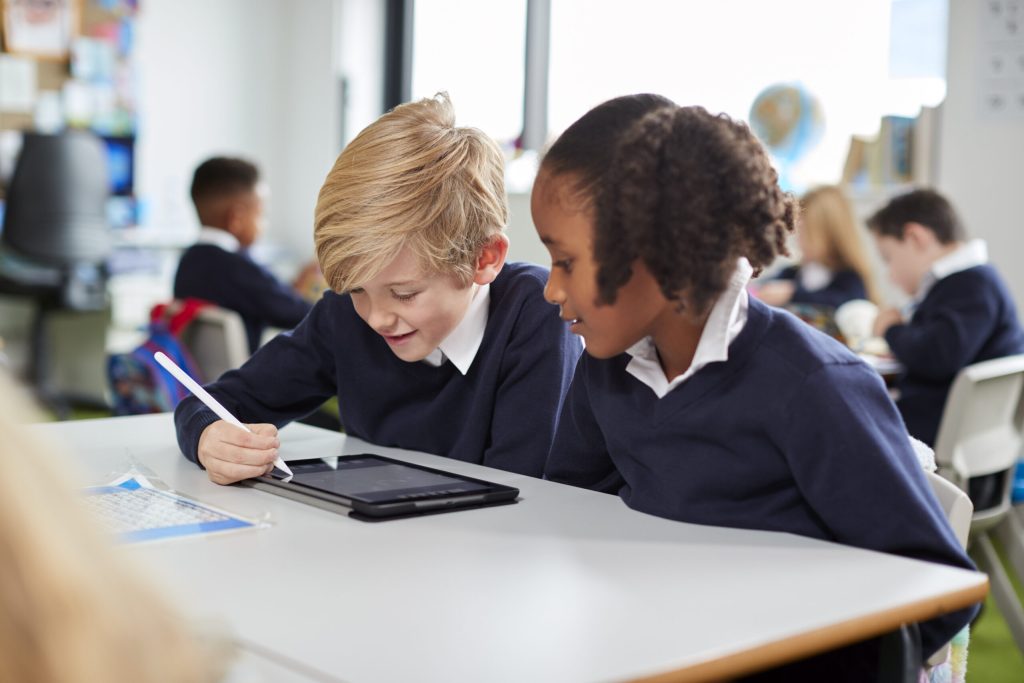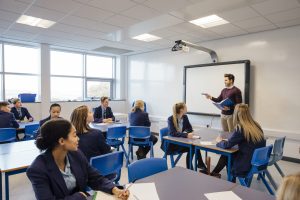Reducing absence – Keeping children in school is not an impossible dream
01 September 2022 Category: Schools, Academies and Trusts
Absences are more than a nuisance. They disrupt learning, are scrutinised by OFSTED, and according to research from the Department for Education, every single day missed by a pupil can be associated with a lower attainment outcome.
Of course, it’s not just the students, it’s the staff as well. When staff disappear it disrupts learning too, not to mention the budget, as supply teachers need to be brought in. All in all, absences are something schools could do without, and while you can’t eliminate every absence, keeping more children and staff in school is not out of the question.
To keep on top of your absence rates – and your overall school performance – you have to stay infection-free; and that’s where protective coatings come in.
How protective coatings remove viruses from the equation
Protective coatings aren’t new but they’re becoming more widespread, and they’re poised to provide us with a more hygienic and safer future.
Put simply, protective coatings prevent the spread of harmful bacteria and viruses in a way no other cleaning chemical does.
Most disinfectants that kill viruses remain active on a surface for 15 minutes. Protective coatings can last for 60 days, and they can still have a strong effect for up to 90 days. That means you’d only have to apply it once a term to see the results.
The way protective coatings work is by creating a layer of tiny spikes across anything it is applied to. The electric charge of the layer is polarised to draw virus, bacteria, and other pathogens into it, while the spikes penetrate and kill anything they come into contact with.
How they protect your school community
Protective coatings technology is not widely used, well not yet. But with heightened hygiene awareness in response to a deadly global pandemic, solutions that can reduce risks are going to be the future industry standard. We think it’s important to be ahead of the curve, because as much as we care about our cleaners, we also care about the places we’re cleaning.
In the wake of a global pandemic, that means creating a space where you are less likely to catch the virus that caused it – not to mention the older, still active ones like Norovirus, flu viruses and the common cold.
We want your staff to go to work in environments where they can flourish, and we want your students achieving the best learning outcomes. OFSTED reports show that children who miss days at school tend to have worse long-term academic output, and it’s impossible to get the most out of your team when they’re absent – but protective coatings can reduce sick days for both students and staff members.
Protective coatings aren’t something we see as a way to just protect the health of the individual. They protect the health of your school community. We don’t see that as a pleasant add on. It’s fundamental and essential.
How they help keep you on top of budget
We’re aware that switching to its use will require an initial financial cost. But this is a way to make sure the environment you use to teach and
support your communities are as hygienic and safe as possible – and it can reduce costs in the long run.
We know that the cost-of-living crisis is going to have a knock-on effect on school budgets, particularly since the energy price hikes are not capped. Every margin counts, and surface protection can find you a bit of breathing room.
- By keeping more teachers in good health, you can keep budgets more manageable as your need for
supply teachers reduces. - You won’t need janitorial and cleaning staff to do touchpoint cleaning all day long. You ensure the same standards of safety in a fraction of the time, and your cleaners won’t be rushing every day to disinfect surfaces that protective coatings could keep hygienic for weeks. This in turn stops touchpoint cleaning from wearing away surfaces or creating bleach and disinfectant marks, which can make a school look scruffy – this means you won’t need to pay painters to touch up the walls, and so on, a little further down the road.
- You can also save directly on energy costs. To keep students safe right now, schools are opening doors and windows, which lets in the fresh air and lets out bugs. As heating bills rise, this will become an increasingly expensive approach, but protective coatings can reduce the time that you need to ventilate classrooms so you won’t be letting as much heat out of your school.
At Nviro we believe in creating environments where people can thrive. It’s not about ‘getting the job done’, it’s about creating a space where people would be happy to work, study, live, or play. We want you to be able to succeed in your environment as much as we succeed in ours.
As a specialist cleaner in educational settings, Nviro provides clean, hygienic and safe environments in universities, colleges and schools. Read our blog about housekeeping and how you can reduce costs while educating building users.


